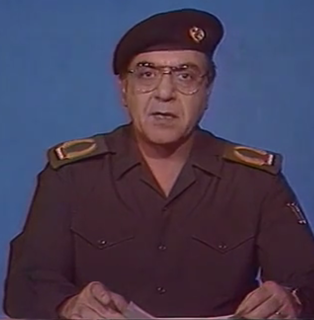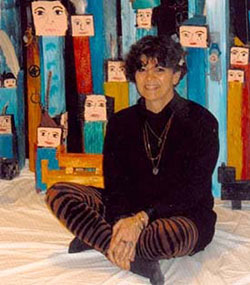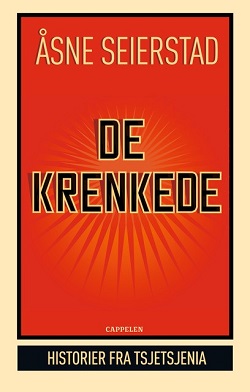 | |
| Author | Åsne Seierstad |
|---|---|
| Country | Norway |
| Language | Norwegian |
| Genre | Non-fiction |
| Publisher | Virago |
Publication date | 2 December 2004 |
| Pages | 336pp (paperback) |
| ISBN | 1-84408-140-0 (paperback) |
| OCLC | 56696983 |
| Preceded by | The Bookseller of Kabul |
| Followed by | Angel of Grozny: Inside Chechnya |
One Hundred And One Days: A Baghdad Journal is a non-fiction book by Norwegian journalist Åsne Seierstad.
Non-fiction or nonfiction is content whose creator, in good faith, assumes responsibility for the truth or accuracy of the events, people, or information presented. In contrast, a story whose creator explicitly leaves open if and how the work refers to reality is usually classified as fiction. Nonfiction, which may be presented either objectively or subjectively, is traditionally one of the two main divisions of narratives, the other traditional division being fiction, which contrasts with nonfiction by dealing in information, events, and characters expected to be partly or largely imaginary.

A journalist is a person who collects, writes, or distributes news or other current information to the public. A journalist's work is called journalism. A journalist can work with general issues or specialize in certain issues. However, most journalists tend to specialize, and by cooperating with other journalists, produce journals that span many topics. For example, a sports journalist covers news within the world of sports, but this journalist may be a part of a newspaper that covers many different topics.
From January until April 2003 — for one hundred and one days — Åsne Seierstad worked as a reporter in Baghdad for Scandinavian, German, and Dutch media. Through her articles and live television coverage she reported on the events in Iraq before, during and after the US-led invasion of Iraq. In her book, Seierstad focuses on the everyday lives of normal Iraqi citizens, providing a rare insight into their daily lives under the constant threat of attack first from the Iraqi government and later from American bombs, as well as describing the frustration felt by journalists in their attempts to discern the truth from the propaganda. [1]

Åsne Seierstad is a Norwegian freelance journalist and writer, best known for her accounts of everyday life in war zones – most notably Kabul after 2001, Baghdad in 2002 and the ruined Grozny in 2006.

Baghdad is the capital of Iraq. The population of Baghdad, as of 2016, is approximately 8,765,000, making it the largest city in Iraq, the second largest city in the Arab world, and the second largest city in Western Asia.

Iraq, officially the Republic of Iraq, is a country in Western Asia, bordered by Turkey to the north, Iran to the east, Kuwait to the southeast, Saudi Arabia to the south, Jordan to the southwest and Syria to the west. The capital, and largest city, is Baghdad. Iraq is home to diverse ethnic groups including Arabs, Kurds, Assyrians, Turkmen, Shabakis, Yazidis, Armenians, Mandeans, Circassians and Kawliya. Around 95% of the country's 37 million citizens are Muslims, with Christianity, Yarsan, Yezidism and Mandeanism also present. The official languages of Iraq are Arabic and Kurdish.










